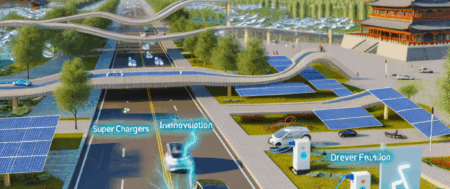In China, the world’s top and largest automotive market, both foreign automakers and domestic car brands are adapting to a transforming landscape shaped by a growing economy, urbanization, and environmental concerns. The push towards Electric Vehicles (EVs) and New Energy Vehicles (NEVs), supported by strong government incentives, is reshaping consumer preferences and market dynamics. Brands are forming joint ventures and strategic partnerships to navigate the complex regulatory landscape and capitalize on the vast consumer base. The intense market competition is sparking technological advancements, as companies invest in R&D to produce vehicles that comply with the government’s green vision and cater to the middle class’s demand for quality and sustainability. Success hinges on understanding the regulatory landscape, leveraging technological innovations, and aligning with consumer preferences and environmental goals.
In the fast-paced lanes of the global automotive industry, the China automotive market stands as a colossus, driving forward as the world’s largest automotive market in both production and sales. Amidst a backdrop of a rapidly growing economy, an expanding middle class, and the swift currents of urbanization, China has emerged as a pivotal arena for both domestic and foreign car brands. This dynamic market, characterized by an insatiable demand for a wide array of vehicles, especially Electric Vehicles (EVs) and New Energy Vehicles (NEVs), is at the forefront of the green revolution, propelled by significant government incentives and a rising tide of environmental concerns.
Foreign automakers find themselves navigating a complex regulatory landscape, often forming strategic joint ventures with local Chinese companies to tap into the vast consumer base that this market offers. The competition is fierce, and success in China’s automotive sector requires a deep understanding of consumer preferences, technological advancements, and the intricate dance of market competition and strategic partnerships. This article delves into the heart of the China automotive market, exploring the key factors that make it a hotbed of innovation and competition. From the drive toward environmental sustainability to the balancing act between domestic and foreign brands, and the crucial role of government incentives in shaping the market, we embark on a journey to uncover the strategies that top brands employ to thrive in China’s booming auto industry amidst its growing economy and urbanization.
1. **Navigating the World’s Largest Automotive Market: How Top Brands Succeed Amidst China’s Growing Economy and Urbanization**

In the heart of the world’s largest automotive market, top brands are carving out their niches through innovative strategies and keen understanding of the evolving landscape. China, with its growing economy and rapid urbanization, presents both immense opportunities and unique challenges for domestic and foreign automakers alike. The country’s shift towards electric vehicles (EVs) and new energy vehicles (NEVs), fueled by environmental concerns and robust government incentives, is reshaping market dynamics and consumer preferences.
Foreign automakers have found success by entering joint ventures with local Chinese companies, a strategic move that allows them to navigate the complex regulatory landscape more effectively. This approach not only facilitates access to the vast consumer base but also enables foreign brands to tap into the local expertise of their Chinese partners. Such strategic partnerships are crucial in a market where understanding local regulations and consumer behavior is key to gaining a competitive edge.
The competition in China’s automotive sector is fierce, driven by a blend of established domestic car brands and international players all vying for a share of the pie. The market’s preference for EVs and NEVs has sparked a wave of technological advancements, with companies investing heavily in research and development to outdo their rivals. This race towards innovation is not just about meeting the environmental regulations but also about aligning with the Chinese government’s vision for a greener and more sustainable automotive industry.
Understanding consumer preferences is another significant factor that determines success in China. The burgeoning middle class, with its increasing purchasing power and evolving needs, is looking for vehicles that offer both quality and sustainability. Top brands that have succeeded in this market are those that have tailored their offerings to meet these demands, providing a range of EVs and NEVs that combine performance with eco-friendliness.
Moreover, the landscape of China’s automotive market is continually influenced by global economic trends. Top brands have to be agile, ready to adapt their strategies in response to the changing economic climate and competitive pressures. This includes leveraging the latest technological advancements not just in vehicle design and manufacturing but also in areas like digital marketing and customer service, where the digital savvy of the Chinese consumer comes into play.
In conclusion, navigating the world’s largest automotive market requires a multi-faceted approach. Success comes to those who understand the importance of joint ventures and strategic partnerships, who can adapt to the regulatory landscape, and who are attuned to the shifting consumer preferences and environmental considerations. For foreign and domestic car brands alike, the Chinese automotive market offers vast opportunities but demands a deep understanding of its unique challenges and dynamics.
In conclusion, the journey through the world’s largest automotive market reveals a landscape filled with opportunities and challenges for both domestic car brands and foreign automakers. The rapid urbanization, growing economy, and burgeoning middle class in China have propelled the demand for automobiles to unprecedented heights, making it a focal point for global automotive industry players. With a keen focus on Electric Vehicles (EVs) and New Energy Vehicles (NEVs), supported by substantial government incentives and increasing environmental concerns, China is leading the charge towards a greener automotive future.
Navigating the complex regulatory landscape requires strategic partnerships, often in the form of joint ventures, enabling foreign brands to tap into the vast consumer base while adhering to local regulations. These collaborations, coupled with a deep understanding of consumer preferences, technological advancements, and the dynamic market competition, are key to succeeding in this competitive arena.
The emphasis on EVs and NEVs, alongside the government’s role in shaping the automotive market through policies and incentives, underscores the unique characteristics of the Chinese market. It is a market that demands innovation, flexibility, and a willingness to understand and adapt to the rapidly changing trends.
For companies looking to make their mark or expand their presence in China’s automotive sector, the importance of leveraging strategic partnerships, staying ahead of technological advancements, and aligning with government objectives cannot be overstated. The road ahead is both promising and demanding, with environmental concerns and consumer preferences continuing to shape the future of the automotive industry in China.
As we look to the future, the China automotive market stands as a testament to the country’s economic resilience, technological innovation, and environmental commitment. For top brands, success will hinge on their ability to navigate this complex landscape, harnessing the power of joint ventures, and aligning with the evolving demands of the world’s largest automotive market.







